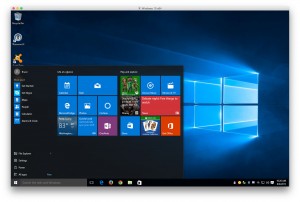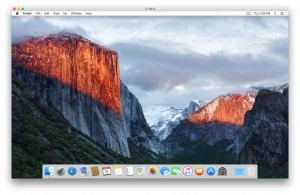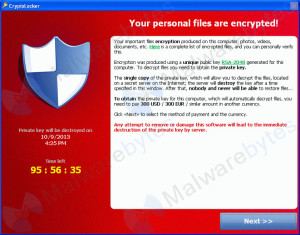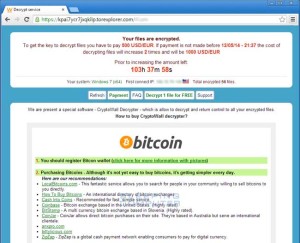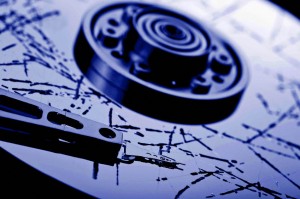
One of the most important things you can do for your peace of mind and security is to back up your computer’s data. Most people don’t care or even think much about backing up, until something goes wrong. At that point everyone cares about restoring what is lost, but of course, if you didn’t back it up you’re pretty much out of luck.
What is your data? Anything stored on your computer – documents, pictures, music, video, projects, etc, are what we call your data. It includes your personal data and your business data. You may also have downloaded programs that you don’t have on a CD or DVD, and cannot download again. Besides backing up your data, it’s a good idea to have a “clone” back up of your whole computer, so if the hard drive fails you can replace everything without having to reinstall from scratch. (That saves a lot of time!).
What could go wrong? All the data on your computer is stored on a fallible piece of hardware called a hard drive. The most common type of hard drive has mirror-finished silver metal platters that spin at speeds up to 7,200 RPM. A metal armature with an electromagnetic tip goes back and forth across the spinning platters reading and writing data in milliseconds. If that hardware gets bumped while it is reading or writing, it can damage either the armature or the platters themselves. Then there is the motor that makes the disks spin and the armature move, and an electronic circuit board called a controller that manages all the activity of the drive. Unfortunately for consumers, any of those parts can fail at any time. Several years ago most hard drives came with a warranty against defects for up to five years. Today most of them come with only a one year warranty. The hard drive manufacturers know the odds that their drives will fail. They figure that one year is a safe bet, but they don’t want to have to cover two years or more. There are some more expensive drives that come with a two, three or even five year warranty, but bear in mind that even if you get a free replacement for the drive, that doesn’t include replacing your lost data. Even the latest solid state drives, which have no moving parts, are still not infallible.
What does backing up mean? Basically it means having your data stored in more than one place. That way if one of the storage media fails, or if you accidentally delete something essential, you can restore it from the other place. The “place” can be a different hard drive, flash drive, or even CD or DVD on site, or it can be at another location. The other location could also be in “the cloud”, which just means on a computer, or server, somewhere on the Internet.
A portable, external hard drive (USB 3.0, 2.0, Firewire or eSata) is an inexpensive, fast option for a local backup. Lately I’ve been using WD Passport Essentials drives, but there are other good options such as Seagate’s GoFlex drives, Hitachi’s G-Drives, and LaCie drives. Try to get one with the longest warranty available. That usually indicates better drive quality.
There are different types of backups. The one major distinction is where to store the backup – “locally”, on a hard drive attached to or wirelessly accessible from your computer, or “in the cloud”, which is a remote backup to a server somewhere on the Internet. Both are important. Local drives allow you to restore large amounts of data much faster than from an online backup, but remote or cloud backups are safer because they are off the premises. No matter what happens to your computer, the off-site backups are there. We recommend doing both.
Backing up should be more or less automatic. If you have to think about backing up too much, and remember to do it regularly, you probably won’t. Most external hard drives of 100 GB or more come with free software for automatic backups. But you still need to install and run the software.
Your Very Own Time Machine. Fortunately for Mac users, Apple has for the past few years included a terrific automatic backup program with the Mac OS X operating system. It’s called Time Machine. As soon as you plug in an external hard drive – whether it has a USB, Firewire or other type of connector, Time Machine recognizes its presence and asks if you want to use that as your Time Machine Backup drive. If you click yes, it will start backing up your computer to it in a couple of minutes. When it has copied your hard drive’s contents, it will do periodic updates to the backup every hour, day, week and month. When the backup drive runs out of space, as eventually it inevitably will, Time Machine will delete the oldest backup to make room for the current state of your computer. It doesn’t delete anything that is still on your computer from the backup, but if you deleted a file or folder, let’s say three months ago, when Time Machine needs more space it will no longer retain that deleted file or folder. The idea is to keep your backup up current, and to keep as many previous versions as you have space for on your backup drive. With Time Machine, you just have to be sure your backup drive is plugged in to your computer whenever you save something new on it, or update an older file. (One caveat: don’t even think about manually deleting the old backups from your Time Machine drive. They are needed to keep the whole backup system intact, since older data is only really backed up again if it changes. Otherwise what look like multiple backups on the drive are really just aliases pointing to the real data).
If you are a Windows PC owner, recent versions of the Windows operating system also have a built-in backup program, but you have to set it up. There are also backup programs that come with just about all of the most popular external hard drive brands, like WD, Seagate and LaCie. Sometimes they have a free version and a premium upgrade option.
Online Backup Services. There are many good online backup services. They all come with their own software, which automates the online backup and updating process. I recommend CrashPlan, Backblaze or Carbonite. They all have PC and Mac versions.
Most of the online backup services, including ibackup.com, will ship the user an empty hard drive with instructions on how to “seed” it with your first backup. If your hard drive has more than 100 GB of data on it, this is the only practical way to start out. If you are not technically inclined, you can hire someone like us to set this up for you. We can start the copying in person or remotely and then you let us know when it’s done and you are ready for the next step. Some services charge a fee for shipping you the seed drive to load up with your data and return. Others include it in the price of a year’s service.
Another great feature of the best online backup services is that if you do have a monumental hard drive failure or other local disaster, they can express ship you a hard drive with all your data on it. That makes recovery much faster than if you had to download everything from the Internet. Prices for this service vary by vendor.
Archiving Data. One more thing about backing up. If your hard drive gets too full, you may want “archive” some data, which means moving it off your computer onto an external hard drive. Just be clear that archiving is NOT the same as backing up. You still need to backup your archive, in case something dire happens to that storage medium. Again, the simple rule of thumb is that if your data isn’t in at least two places, you risk losing it. When it comes to backing up, redundancy is good. Having your data stored in more than two places, with one of the places preferably being off-site, is much better than only two.
Some Backup is Better than None. Whether you just do local backup, online backups, or both, the main thing is to be sure that your data is backed up SOMEWHERE that is safe, reliable, and easy to access. You can even put your most important documents on a flash drive and store it with a friend across town. However you decide to backup, do it often. That major addition to your novel you wrote today won’t be in the backup you did last night.
Trust but Verify. It is very important to TEST your backups from time to time. Don’t assume that everything is working. Pick a file at random and restore it from the backup, just to make sure you can. If you have a mirror backup or “clone” drive, try starting up from it once a month.
Okay, I didn’t back up and now the hard drive doesn’t work. Is there any way to recover my data? Yes, data recovery companies like Drive Savers have industrial grade clean rooms where they can take apart your drive and put the platters on another drive to recover some or all of the data. But that meticulous process comes at a a high price. The minimum charge is usually about $1,000, and it can go much higher, depending on how much data you have to recover, and how much they are able to read from the disk. That makes it a no-brainer: would you rather spend $100 to $200 for a backup drive and software or $1,000 and up for emergency data recovery? Backing up is definitely the better investment, from an emotional as well as a financial perspective.
If you’d like help choosing a backup solution, give us a call. Like insurance, backing up is what you want to think about before disaster strikes, not after.
